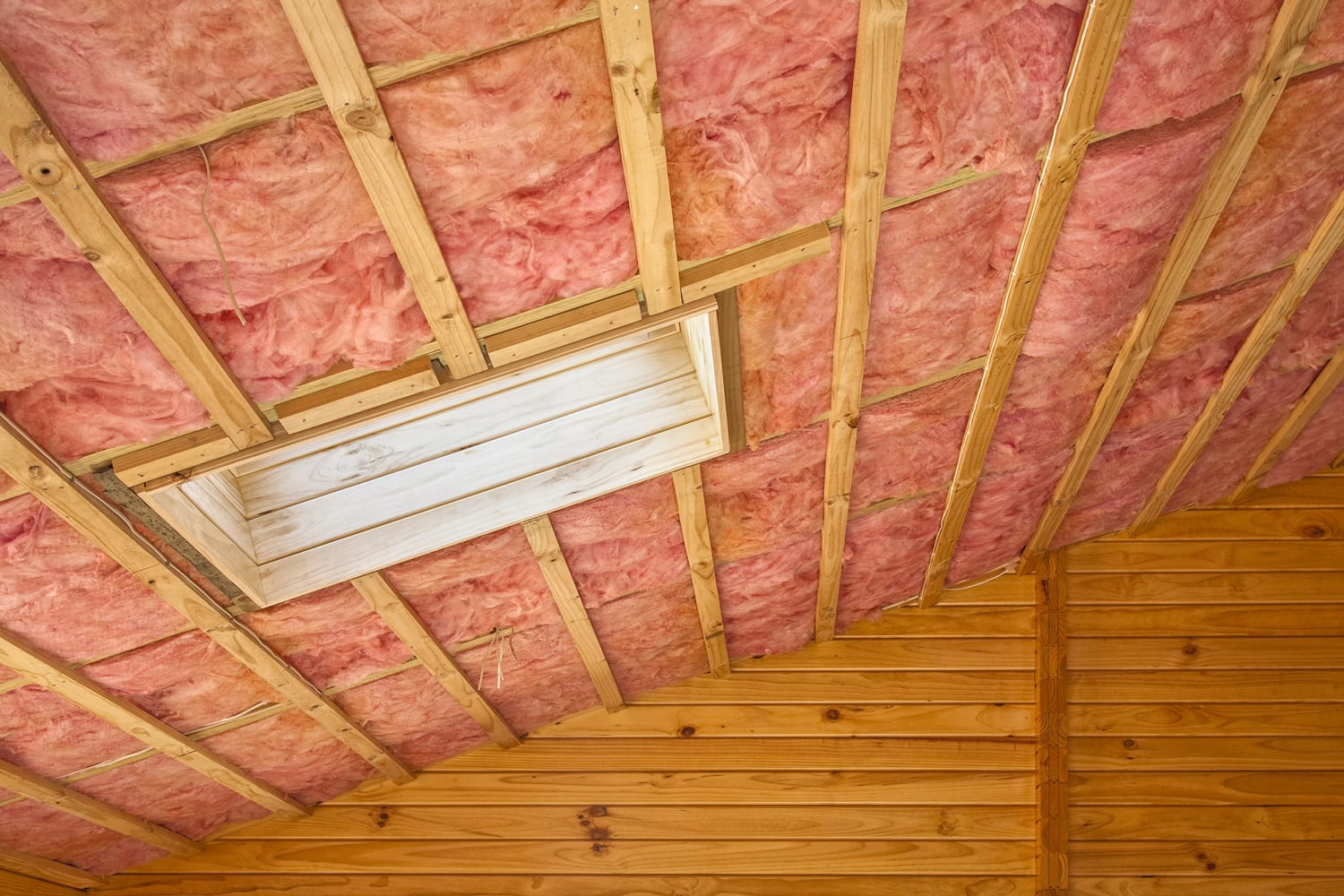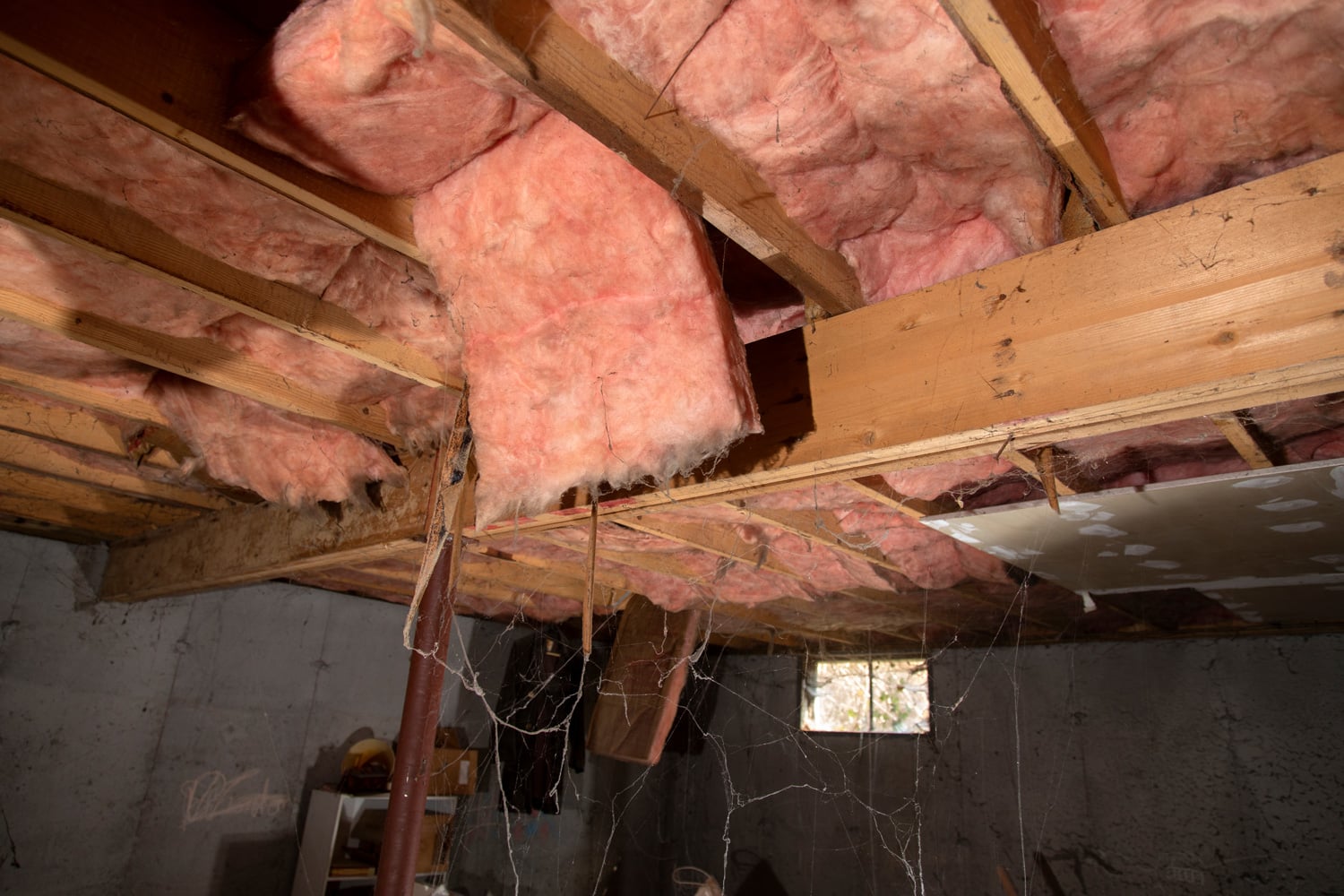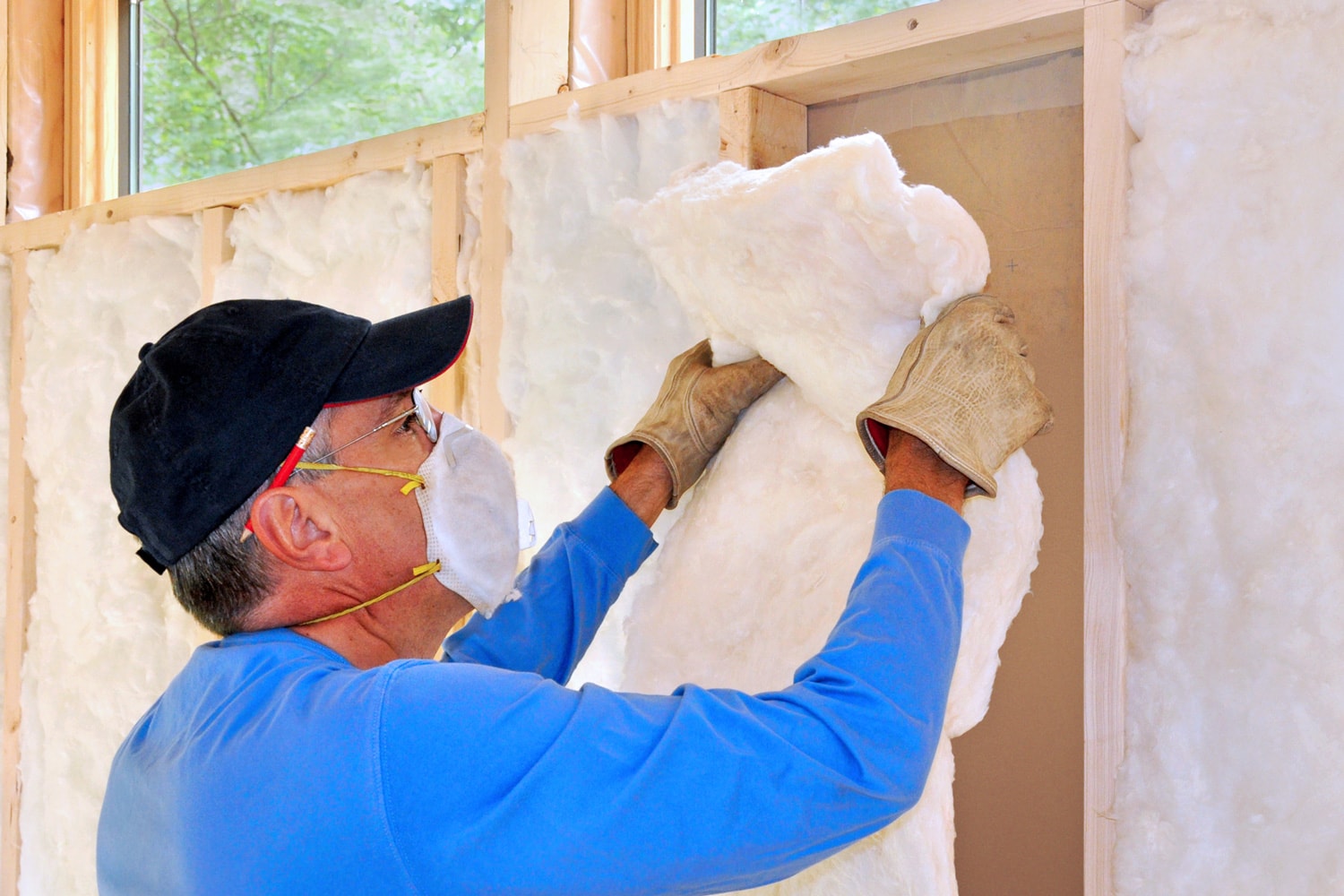It can be challenging to clean up fiberglass insulation, as this is a hazardous material. If you don’t know how to get rid of it completely on your own, you’ve come to the right place. We've researched the information needed to figure out how to safely clean it up, so keep reading to get the answers.
To clean the fiberglass insulation, the following are the steps:
- Wear protective gear.
- Pull off the insulation.
- Collect the insulation.
- Vacuum the dust.
- Clean the remaining debris.
- Dispose of the bag with fiberglass insulation.
- Remove your clothing properly.
We'll go through each step of the process of cleaning up fiberglass insulation in this post. We'll also discuss when it should be removed, the health impacts, and more.

What Is Fiberglass Insulation?
Fiberglass is a common housing insulation material made from tiny glass fibers. Batts and rolls, as well as loose-fill insulation, are the most common types of fiberglass insulation. There are also rigid boards and duct insulation available.
In accordance with the U.S. Department of Energy (DOE), medium and high-density fiberglass batt insulation materials with somewhat higher R-Values than regular batts are already available from manufacturers. Unfinished walls, floors, and ceilings can all be covered with fiberglass. It's also installed between studs, joists, and beams.
Fiberglass is used in both residential and commercial insulation projects to restrict the transmission of heat and cold. Fiberglass is an excellent choice for homeowners wishing to save money or complete the installation as a do-it-yourself effort.
How To Clean Up Fiberglass Insulation?

You can clean up and get rid of fiberglass yourself. Here’s how:
1. Wear Protective Gear
Before you begin cleaning up fiberglass insulation, make sure you are well protected. To keep your body safe from the particles, you should invest in some protective clothing.
Click here to see this coverall on Amazon.
Dust will not enter your eyes, nose, or mouth if you wear a HEPA cartridge in a half-face or full-face respirator.
Click here to see this full-face respirator on Amazon.
To avoid skin irritation, wear clothing that covers all of your skin. Long-sleeved shirts, working gloves, and long pants, as well as work boots or shoes, are recommended. Fiberglass dust can stick to your hair, which is why it is recommended to wear a cap to protect your scalp.
Click here to see these safety work gloves on Amazon.
2. Pull Off The Insulation
To reduce fiberglass dust, moisten the insulation with a water hose if possible. It's easier to pull the insulation off the ceiling, walls, or floor of the structure once it's wet. Make sure you do it into sections. If you can't soak the insulation with water, pull the insulation out in sections to remove it.
3. Collect The Insulation
Discard the fiberglass insulation in plastic garbage bags. Use a twist tie to close the bags.
Click here to see these large garbage bags on Amazon.
4. Vacuum The Dust
It's best to use a vacuum cleaner with HEPA or ULPA filter to remove blown-in insulation, because regular vacuum cleaners will simply scatter the pieces of fiberglass. You can get this equipment through a rental service and or at a home improvement store.
Click here to see this HEPA vacuum cleaner on Amazon.
5. Clean The Remaining Debris
With a stiff broom, sweep any remaining fiberglass debris into a dust pan and put it in a garbage bag.
Click here to see these heavy-duty brooms and dustpan sets on Amazon.
6. Dispose Of The Bag With Fiberglass Insulation
If you don’t want to track fiberglass particles through a clean space or one with pets or children, remove the bags from the building through a window or door.
Then dispose of it properly. If your garbage collection service does not accept construction materials, take the bags of fiberglass insulation to the nearest landfill or incineration plant.
7. Remove Your Clothing Properly
After being exposed to fiberglass, remove your clothes in a location where the particles won't shake off onto other materials. Get rid of the clothing and store it apart from other laundry and furnishings.
Find a place to have them cleaned, or you can throw them away in a garbage bag. It is important to take the necessary precautions because the clothes you wear during the cleanup may potentially be contaminated.
To see an actual demonstration on how to remove insulation, check out this video.
When Does Fiberglass Insulation Need to Be Removed?

In general, there are a few reasons why you may need to remove and replace your fiberglass insulation.
Due To Aging
Fiberglass can last from 80 to 100 years. However, after 15 to 20 years, it may start to disintegrate. Moisture and gravity can also cause it to degrade over time. Its efficacy is contingent on its remaining light and fluffy.
Due To Water Or Mold
Although insulation materials are meant to withstand humidity and moisture, an unattended water leak can result in mold growth. Mold in your insulation can be harmful to your family's health. Mold spores can cause headaches, coughing, and digestive problems.
Due To Pest Infestation
Animal urine and droppings produce a toxic environment that affects indoor air quality and breaks down the insulation and structural elements over time. As they nest and multiply, rodents and insects can tunnel through and eat through insulation.
If your insulation has been infested with pests, you may need to remove all of the insulation to make it clean and safe again.
Due To Structural Damage to the Roof
Insulation becomes vulnerable when it is damaged or begins to break down, allowing space between insulation sites to open up. For example, if your roof was improperly built, wood chips could enter the insulation. These holes enable moisture and dirt into the insulation, reducing its ability to repel moisture and allowing mold to form.
How To Tell If Your Fiberglass Insulation Needs Removal?

Take a flashlight and check around your insulation space. You may need to remove it if you can identify the following:
- Crumbling Insulation - If your old insulation crumbles when touched or shows other signs of aging, it may need to be replaced.
- Moisture - If you notice apparent water damage or can smell or feel the moisture in the air, you may require insulation removal and mold treatment.
- Mold – Mold might be apparent to the naked eye. It may appear on the insulation as black, gray, green, or brown spots or streaks.
- Unwanted guests — If you see or smell animal waste, tunneling or nests, you may need to remove existing insulation and repair any insect damage to the building. If you've heard the pitter-patter or gnawing of these pests when the house is quiet, this shouldn't come as a surprise.
Is Fiberglass Dust Harmful?
The effects of fiberglass exposure vary depending on the fiber size and type of exposure. Larger fibers have been shown to irritate the skin, eyes, and upper respiratory tract. Other negative health impacts include:
- When the fibers become buried in the skin's outer layer, a rash might develop.
- After being exposed to fiberglass, your eyes may get red and itchy.
- When fibers are inhaled, they can cause irritation in the nose and throat. Exposure to fiberglass can worsen asthma and bronchitis.
- If you consume fibers, you may get a temporary stomach upset.
The health effects of tiny fibers are poorly defined. The capacity of smaller fibers to reach the lower region of the lungs increases the risk of negative health repercussions.
Long-term exposure to fiberglass is possible for people who work with fiberglass in their homes or offices. No proof exists that fiberglass causes cancer in humans. When fiberglass fibers were implanted in the lung tissue of rats, studies showed an increased risk of cancer.
However, these results are contentious because of how the fibers were implanted. The International Agency for Research on Cancer (IARC) has classed several fiberglass fibers as potential human carcinogens based on animal research (cancer-causing agents).
How Much Does It Cost To Remove Fiberglass Insulation?

If you are planning to hire a professional, the cost of removing old insulation varies depending on the type of insulation, where you live, and whether it's a one-time or ongoing service. To that end, the cost of removing insulation ranges from $1 to $2 per square foot.
For a normal 600-square-foot area, the cost of removing insulation ranges from $600 to $1,200, with an average cost of $900. This price excludes associated costs such as insulation disposal and fresh insulation installation.
The larger the space, the higher the price. The more difficult the task – such as water damage or pest infestation – the higher the expense.
You shouldn't choose the cheapest option just to save money. It's important to remove the insulation safely because, depending on the material, improper disposal might have serious health consequences.
Wrapping Things Up
Fiberglass insulation keeps heat and air conditioning from escaping. It comes in rolls and chunks that can be blown into small spaces.
Glass fibers are used to make the material, and inhalation of this substance is hazardous. When cleaning up the insulation, it's important to use protective equipment so that you can avoid getting the substance in your eyes and lungs or on your hands. Also, properly dispose of the waste.
If it is daunting to clean up the fiberglass insulation by yourself, you can hire a professional. Working with a professional is usually a smart option. This is especially important if you're removing insulation due to mold, asbestos, or other issues. These materials can be detrimental to your health if you come into contact with them.
If you enjoyed reading this post, here are similar articles you may like:






